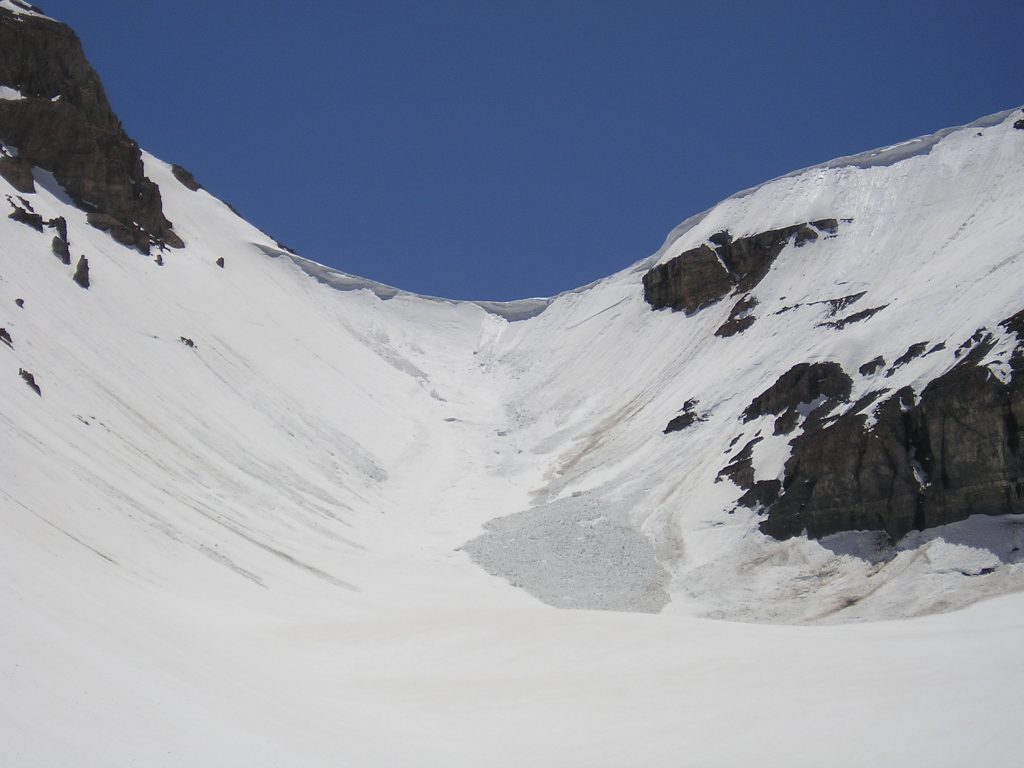
This photo from TERT’s Mark Gerberding shows cornices that have formed over the Timpanogos Glacier and along the ridge that leads to it from the summit.
Why are Cornices Dangerous for Hikers?
- Sudden Collapse: Cornices break off without warning.
- Unseen Edges: The true ground edge is often hidden, making the solid ground invisible from above.
- Fatal Plunges: A collapsing cornice can send you falling onto rocks, ice, or into steep terrain below.
- Remote Triggering: Your weight, even from a distance, can cause a cornice to break.
- Avalanche Risk: A falling cornice can trigger a dangerous avalanche on slopes below.
How to Stay Safe Around Cornices:
- Stay Far Back: Always stay 20-30 feet (6-9 meters) away from any visible ridge edge. Assume a cornice is present.
- Identify Safely: Observe ridges from a safe vantage point to spot overhangs.
- Beware Warm Weather: Warming temperatures severely weaken cornices; they are most dangerous in spring.
- Avoid Walking Below: Never hike directly beneath a corniced ridge.
- Low Visibility is Risky: Fog and whiteout conditions hide cornices. Turn back if unsure.
